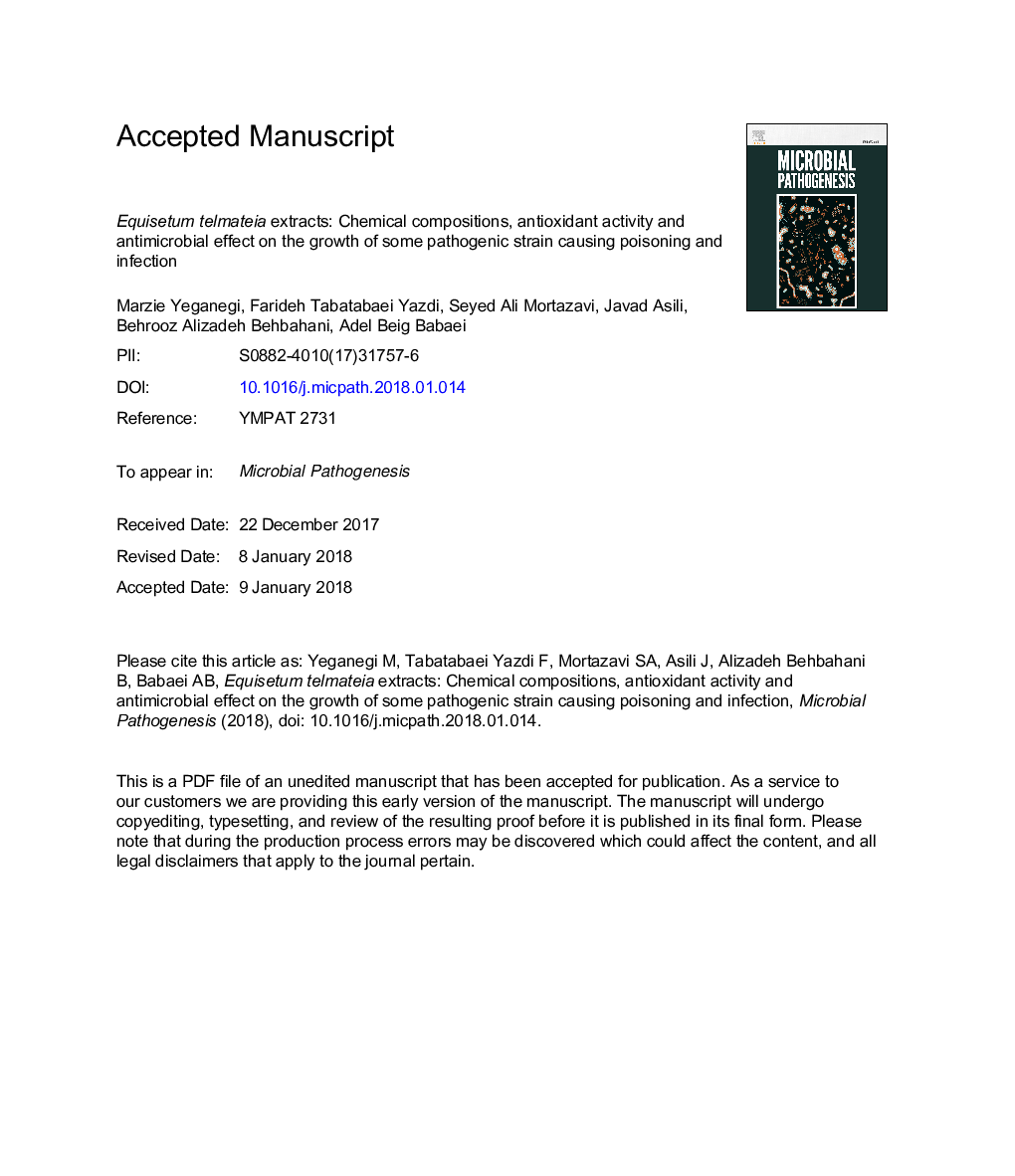| Article ID | Journal | Published Year | Pages | File Type |
|---|---|---|---|---|
| 8749700 | Microbial Pathogenesis | 2018 | 21 Pages |
Abstract
The aerial parts of Equisetum telmateia have been used as a source of biologically active compounds to treat inflammatory, diarrhea, stomach-ache, eczema and mouth infections in traditional medicine. The aim of this work is to evaluate the extraction yield, chemical compositions, antioxidant activity and antimicrobial activity of E. telmateia extracts on Staphylococcus aureus, Bacillus cereus, Escherichia coli, Salmonella typhi and Candida albicans. Chemical compositions E. telmateia was analyzed by high performance liquid chromatography (HPLC) using a C18 column. Analysis of E. telmateia extract by HPLC allowed the identification of Kaempferol 3-O-(6â³-O-acetylglucoside) as major compound. The antioxidant activity of extracts was examined by measuring their ability to sequestrate 2,2-diphenyl-1-picrylhydrazyl (DPPH) radicals. The results showed that the DPPH (IC50â¯=â¯70.83â¯Â±â¯0.2â¯Î¼g/ml) were obtained in the case of supercritical fluid extraction (SFE) extract. MIC microdilution assay were used to determine the antimicrobial activities. Contrary to lower extraction yield (9.6â¯Â±â¯0.5), the SFE extract exhibited the highest antimicrobial potency with MIC and MBC values of 32â¯mg/ml against S. aureus compared to the other extracts. The results suggest that SFE method is more appropriate for extraction of E. telmateia biologically active substances with antimicrobial and antioxidant activity than conventional solvent extraction methods.
Related Topics
Life Sciences
Immunology and Microbiology
Microbiology
Authors
Marzie Yeganegi, Farideh Tabatabaei Yazdi, Seyed Ali Mortazavi, Javad Asili, Behrooz Alizadeh Behbahani, Adel Beigbabaei,
